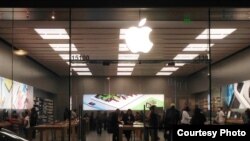Businesses striving to stamp out slavery from their supply chains should not dismiss struggling suppliers but train them to improve the lives of workers, and technology can play a part, leading companies including Apple and Walmart said on Wednesday.
In recent years modern-day slavery has increasingly come under the global spotlight, putting ever greater regulatory and consumer pressure on firms to ensure their supply chains are free of forced labor, child labor and other forms of slavery.
From cosmetics and clothes to shrimp and smartphones, supply chains are often complex with multiple layers across various countries - whether in sourcing the raw materials or creating the final product - making it hard to identify exploitation.
As companies delve deeper into their supply chains to examine workers’ conditions, they should not punish suppliers who violate human rights but help them raise standards and work more efficiently, said Paula Pyers of U.S. tech giant Apple.
“We are loathe to terminate a business relationship in cases of violations,” Pyers, Apple’s head of supplier responsibility, told the Thomson Reuters Foundation’s annual Trust Conference, which focuses on slavery and women’s empowerment.
“We want to teach and train suppliers to make them better,” said Pyers, adding that Apple has helped more than 11.5 million workers to learn their rights, and returned at least $28 million to 35,000 employees forced to pay fees to obtain their jobs.
Turning to tech
About 25 million people globally were estimated to be trapped in forced labor in 2016, according to the International Labor Organization (ILO) and rights group Walk Free Foundation.
With consumers increasingly conscious of slave labor and willing to pay more for ethically sourced goods, big brands should lead by example to inspire their suppliers to get into line, and also to boost profits, said Jan Saumweber of Walmart.
“Responsible sourcing is key towards our goal of being the most trusted retailer,” said Saumweber, senior vice president of responsible sourcing at Walmart, the world’s largest retailer.
She said Walmart has turned to technology to improve workers’ rights worldwide - from hotlines to a smartphone app in the style of TripAdvisor that allows Burmese migrants working in Thailand’s fishing industry to review their employers.
Speaking on a panel about best business practices to tackle modern slavery, several experts said cleaning up supply chains would only be sustainable if this resulted in greater profits.
“Investors can direct trillions of dollars to companies with strong human rights policies and clean supply chains,” said Jean Baderschneider, head of Global Fund to End Slavery, a public-private partnership seeking $1.5 billion to combat the crime.
“But it can’t be a case of charity or philanthropy – they need to see better returns through having clean supply chains.”
But firms’ efforts to tackle slavery, from codes of conducts to audits, are often lip service and deflect attention from a need for tougher measures, said Bobby Banerjee, professor of management at the University of London’s Cass Business School.
“The problem with CSR (corporate social responsibility) is that there is too much C, and not enough S or R,” he said.
"Forced labor is not an aberration, but a viable management practice ... an outcome of the economic system we live in."





